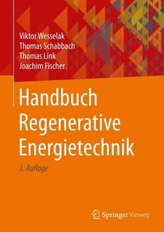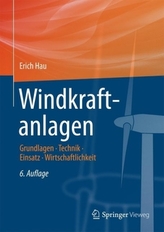Exploration and Production of Oceanic Natural Gas Hydrate
13
%
3624 Kč 4 186 Kč
Sleva až 70% u třetiny knih
Preface
Chapter 1 Energy Overview: Future for Natural Gas 1.1 Energy, GDP, and Society 1.2 The Energy Mix 1.3 Electrical Load Characteristic 1.4 Matching Power Supply to Demand 1.5. The 100% Renewable Energy Objective and the Cost and Security Roadblocks 1.6 Energy Policy in a CO2 Sensitive Power Future
1.7 Strategic Importance of Natural Gas in the New Energy Paradigm 1.8 Natural Gas Backstop to Renewable Energy References
Chapter 2 Economic Characteristics of Deepwater Natural Gas Hydrate 2.1 Natural Gas Hydrate 2.1.1 NGH as a Natural Gas Storage Media 2.1.2 Solution Concentration Controls Growth 2.1.2.1 Gas Transport within a Sediment Pile 2.1.3 NGH Stability 2.1.4 The Gas Hydrate Stability Zone 2.1.5 The Seafloor may not be the Top of the GHSZ: 2.2 NGH Stability within the GHSZ: Implications for Gas Production Cost 2.3 Geology Controls NGH Paragenesis 2.4 Production-Oriented Classification of Oceanic NGH Concentrations in Permeable Strata 2.5 NGH may be the Largest Natural Gas Resource on Earth 2.6 Other NGH Concentrations that May Be Producable 2.6.1 NGH Vent Plugs 2.6.2 Stratabound Secondary Porosity NGH Concentrations 2.6.3 Blake Ridge Type Deposits 2.7 NGH in the Spectrum of Conventional and Unconventional Oil and Gas Resources 2.8 Low Environmental Risk Character of the NGH Resource 2.9 Could Low-Salinity Water be a Valuable Byproduct?
References
Chapter 3 Exploration for Deepwater Natural Gas Hydrate 3.1 NGH Exploration 3.1.1 Deepwater and Ultra-deepwater 3.1.2 Basin modeling 3.1.3 NGH Prospect Zone. 3.2 NGH Petroleum System Analysis 3.2.1 NGH and Conventional Hydrocarbon System Analysis 3.3 Marine Sediment Host for NGH deposits 3.4. NGH Reservoir Hydrocarbon Component Expectations 3.4.1 Closed NGH Concentrations 3.4.2 Open NGH Concentrations 3.5 NGH Exploration Methods 3.5.1 Seismic Survey & Analysis 3.5.1.1 BSR (Bottom Simulating Reflector) 3.5.2 Ocean Bottom Seismometers 3.5.3 Electromagnetic (EM) Survey 3.5.4. NGH Ground-Truthing: Drilling 3.5.4.1 Picking Drilling Targets 3.5.5 State of NGH Exploration 3.6 NGH Exploration Potential: Glacial Period Sea Level Low Stands in the Mediterranean and Black Seas 3.6.1 The Mediterranean Sea 3.6.2 Lowstand in the Black Sea: Sand Transfer to the Slopes 3.6.3 GHSZ and NGH Prospectability in the Mediterranean and Black Seas 3.7 National NGH Programs and Company Interest 3.7.1 Exploration Activity in Regions and Countries 3.8 Frontier Regions References
Chapter 4 Potential High Quality Reservoir Sediments in the Gas Hydrate Stability Zone 4.1 High Quality Sand Reservoirs on Continental Margin. 4.2 Subsided Rift-Related Sediments 4.3 Paralic Reservoirs 4.4 Aeolian - Sabkha Reservoirs 4.5 Contourites 4.6 Sequence Stratigraphy-Related Marine Sequences 4.7 The Special Case of High Quality Reservoir Potential in the Mediterranean and Black Seas 4.8 Exploration for High Quality Reservoirs References
Chapter 5 Valuation of NGH Deposits 5.1 Petrogenesis 5.1 Mineralization Grade 5.2 Valuation 5.2.1 Regional Estimates: Shelf or Basin Analysis 5.2.2 Reservoir Analysis 5.2.3 D Body Analysis 5.2.4 Cell Analysis 5.2.5 Water in the NGH Reservoir 5.3 Geophysical Characterization of NGH Deposit Settings 5.4 The Creaming Curve References
Chapter 6 Deepwater Natural Gas Hydrate Innovation Opportunities 6.1 NGH Technology Opportunities 6.2 Exploration Opportunities 6.3 Drilling 6.3.1 Material Requirements 6.3.2 Geotechnical Attributes & Reservoir Stability 6.3.3 Wellbore Stability 6.3.4 Drilling Depths, Pressures and Temperatures 6.4 Production Opportunities 6.4.1 Temperature and Pressure: Production Hazard Potential 6.4.2 Production Containment; Leak-Proof Production from NGH 6.5 Operations on the Seafloor 6.6 Environmental Security 6.7 Lightweight Exploration and Production 6.8 Summary of NGH Opportunity Issues and Conclusions References
Chapter 7 Leveraging Technology for NGH Development and Production 7.1 The Curve of Technology and Innovation 7.2 Moving to the Seafloo
| Autor: | Max, Michael D. |
| Nakladatel: | Springer, Berlin |
| Rok vydání: | 2019 |
| Jazyk : | Angličtina |
| Vazba: | Hardback |
| Počet stran: | 395 |
Mohlo by se vám také líbit..
-

Windenergie
Jarass, Lorenz
-

Keine Panik vor Elektrotechnik!
Tieste, Karl-Dieter
-

Bussysteme in der Fahrzeugtechnik
Zimmermann, Werner
-

Handbuch Regenerative Energietechnik
Wesselak, Viktor
-

Handbuch Elektrotechnik
Plaßmann, Wilfried
-

Grundlagen der Elektrotechnik und Ele...
Paul, Steffen
-

Elektromagnetische Verträglichkeit
Schwab, Adolf J.
-

Windkraftanlagen
Hau, Erich
-

Elektronik
Zastrow, Dieter
-

Elektrotechnik
Zastrow, Dieter
-

Grundlagen der Steuerungstechnik
Karaali, Cihat
-

Sensoren für die Prozess- und Fabrika...
Hesse, Stefan
-

Elektrochemische Speicher
Kurzweil, Peter
-

Low-Power Analog Techniques, Sensors ...
Makinwa, Kofi A. A.
-

Dynamics of Parallel Robots
Staicu, Stefan
-

Meteorologie
Klose, Brigitte





